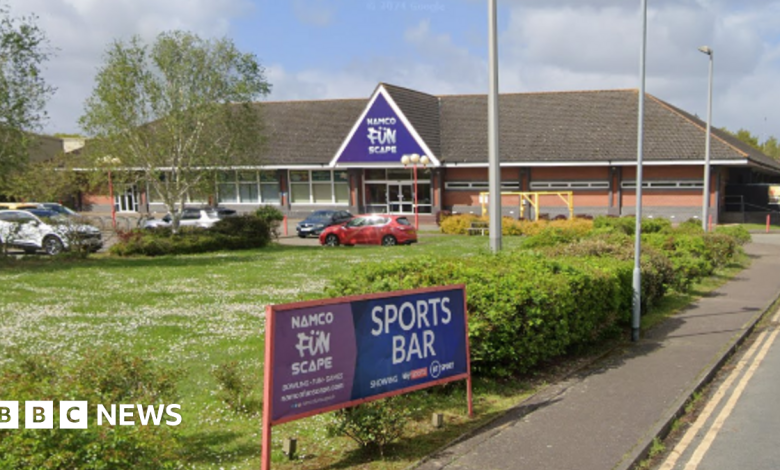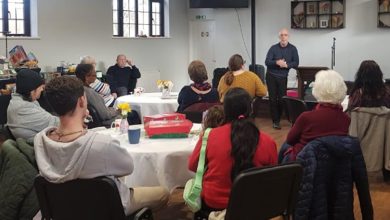Lidl plan for Norwich bowling alley used by England players

The local community is up in arms over a proposed development that could potentially lead to the loss of a beloved leisure facility. For over 30 years, the purpose-built bowling alley has been a staple in the area, providing a unique space for recreational activities and competitive sports. However, with the possibility of a new supermarket being built on the site, residents are voicing their concerns about the potential consequences. The loss of the bowling alley would not only affect the local community but also have a ripple effect on the wider region, as it is a hub for tenpin bowling in Norfolk and Suffolk. The bowling alley’s manager, Mr. Punter, is particularly passionate about the issue, highlighting the fact that the facility is used by top-level bowlers, including a woman who competes for England and four senior Team England squad members.
One of the primary concerns raised by residents is the potential impact on parking, traffic, and safe pedestrian access. The area is already congested, and the addition of a new supermarket would likely exacerbate the problem. Furthermore, with several existing supermarkets in the vicinity, including Roy’s, Aldi, and Sainsbury’s, many residents feel that another supermarket is unnecessary. In fact, Roy’s and Aldi have formally objected to the proposal, as has Waitrose, which has a store in the nearby town of Eaton. The objections are not just about the practicalities of the development but also about the potential loss of a unique community asset. The bowling alley is a space where people of all ages can come together, socialize, and engage in a fun and competitive activity. Mr. Punter’s Tuesday night league, which has 13 teams of eight players, ranging from juniors to octogenarians, is a testament to the bowling alley’s importance as a community hub.
The bowling alley’s significance extends beyond its role as a recreational facility. It is also a breeding ground for talented young bowlers, with two of its juniors from Norwich recently representing England at the European Championships in Turkey. The facility’s loss would not only affect the local community but also have a negative impact on the sport as a whole. Tenpin bowling is a popular activity in Norfolk and Suffolk, and the bowling alley is one of the few dedicated facilities in the area. Mr. Punter is saddened by the prospect of losing the facility, stating that it would be “a bit sad” to see the region’s talented bowlers disappear. The bowling alley’s demise would also leave a void in the community, as it is a space where people can come together, socialize, and engage in a fun and competitive activity.
The company that operates the bowling alley, Namco Funscape, has stated that the decision on the facility’s future lies with the landlord, as their lease is due to end in 2027. This has left residents and bowling enthusiasts feeling uncertain and concerned about the future of the facility. The potential loss of the bowling alley has sparked a wider debate about the importance of community assets and the need to preserve them. In an era where many community facilities are being sold off or redeveloped, the bowling alley’s story serves as a reminder of the importance of preserving unique and valued community spaces. The facility’s loss would not only affect the local community but also have a negative impact on the sport of tenpin bowling, which is deeply rooted in the region.
The proposed development has also raised questions about the priorities of local planners and policymakers. While the need for new supermarkets and retail spaces is often cited as a justification for development, the potential consequences for community facilities like the bowling alley are often overlooked. The bowling alley’s story highlights the importance of considering the broader social and community impacts of development, rather than just focusing on economic or practical considerations. By prioritizing the preservation of community assets like the bowling alley, policymakers can help to create more vibrant, inclusive, and sustainable communities. The bowling alley’s fate serves as a reminder of the need for more nuanced and community-focused approaches to development, which take into account the unique character and needs of each area.
As the debate over the bowling alley’s future continues, residents and bowling enthusiasts are holding out hope that a solution can be found to preserve the facility. The bowling alley’s manager, Mr. Punter, remains optimistic, highlighting the facility’s importance as a community hub and its role in promoting the sport of tenpin bowling. While the outcome is uncertain, the bowling alley’s story serves as a powerful reminder of the importance of preserving unique and valued community spaces. By prioritizing the needs and concerns of local residents, policymakers can help to create more vibrant, inclusive, and sustainable communities, where facilities like the bowling alley can continue to thrive. The fate of the bowling alley remains to be seen, but its story has already sparked a wider debate about the importance of community assets and the need to preserve them for future generations.









d0krde